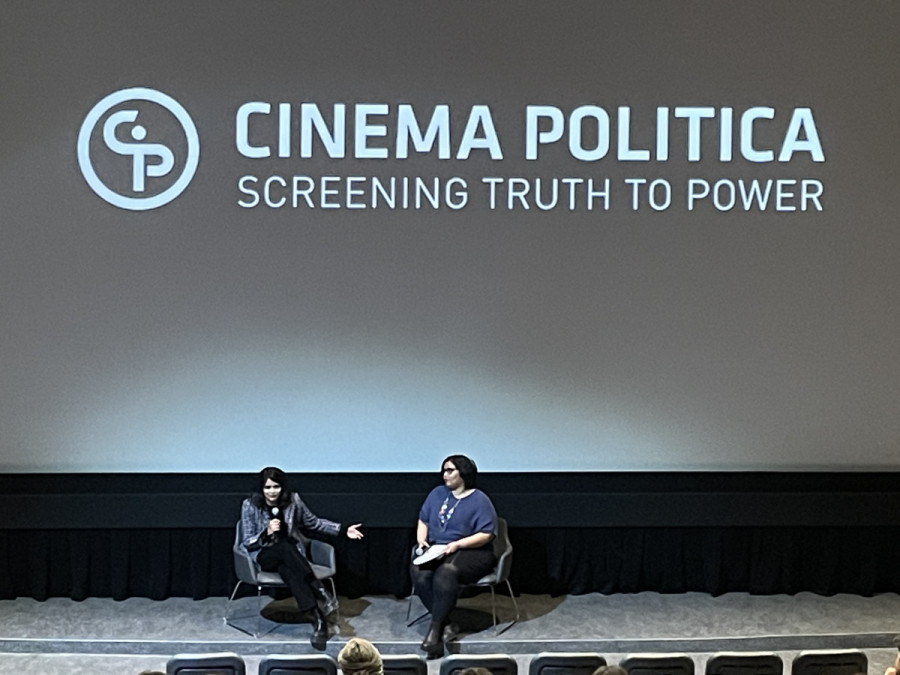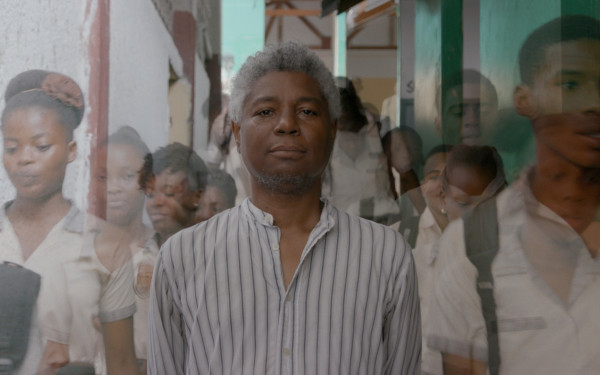Cinema Politica screens ‘Writing With Fire’ documentary and questions its target audience
The media arts organization returns with its first in-person film screening of the year
Cinema Politica’s first in-person screening since Dec. 6 featured Writing With Fire.
The 2021 film documentary is about the only all-woman news organization in India, Khabar Lahariya. The screening was followed by a Q&A discussion featuring Ishita Tiwary and Komal Mohite.
The film follows chief reporter Meera as she and her team of journalists track down news stories throughout the Uttar Pradesh state of India. Directed by Rintu Thomas and Sushmit Ghosh, Writing With Fire highlights the misogyny these women face, but also classism as Dalit women.
Deriving from Hinduism, India’s caste system is among the oldest social hierarchies in existence. While divided into four ranks, considered the fifth and lowest caste are people known as Dalits, translating to broken or scattered.
The Dalit women in this movie face ignorant politicians and policeman and are pressured into following gender norms, such as giving up their career to marry. Despite this, Meera and her team report rigorously throughout the Uttar Pradesh districts, hoping to make an impact in communities by reporting on the living conditions for lower caste individuals.
What starts out as a local newspaper becomes a digital enterprise featuring video news coverage, and garnishes worldwide attention by the end of the movie.
Although the movie displays a heartwarming story about the rise of a women-led newspaper, the discussion that followed the screening highlighted the disheartening reality of caste-related oppression.
Read more: Smaller Montreal venues are ready to open their doors to live music and crowds again
“One thing I want to flag is representation of caste,” said Ishita Tiwary, one of the panelists and an assistant professor at Concordia University. “I think the film in some ways pitches it as this underdog story […] and sometimes I think the complexity of caste gets flattened.”
Between 2018 and 2020, more than 130,000 Dalits experienced an act of violence. A study from the National Crimes Records Bureau also showed that 10 Dalit women or girls are sexually assaulted every day in India.
“We have to try to centre, focus, and support movements that are challenging structural, political, and social injustices in India, and I think this film speaks to that.” — Stefan Christoff
Tiwary went on to express her concern that neither director of this movie was a Dalit, showing a lack of self-awareness on the films themes, and not speaking to the overall oppression of the caste system.
The journalists show fearlessness in their reporting, though this may only occur because of the safety of background cameramen. The discussion panelists questioned whether these reporters would be in more danger, or receive different treatment in their interviews if not for the extra cameras which held their interviewees accountable.
“It’s clear that this movie was made for a western audience,” said Varssha Kumaraverl, a liberal arts student from Sri Lanka. “Even though there is representation, it’s the way that [Dalits] have been used as a lens by really wealthy, high-caste producers or filmmakers that is quite an interesting perspective.”
The film speaks to one portrayal of Dalit women, when in reality there is much more nuance required to cover this caste faction.
Komal Mohite, another panelist and a Dalit woman, mentioned that her main grievance with the film was a lack of context. She noted there was no reference to B. R. Ambedkar, one of the main leaders of the anti-caste movement, or the Bhim Army, which is a pro-Dalit military group.
Mohite was appreciative that the filmmakers were able to display the full lives of Dalits beyond hardship. “I do take umbrage to the fact that Dalits are always dramatically associated with violence, oppression, and stigma as if we don’t have any other subjectivity.”
Stefan Christoff, Cinema Politica’s external coordinator, acknowledged that this movie doesn’t encapsulate the full picture of what is happening in India, but believes it’s important to deepen people’s understanding of modern India.
“We have to try to centre, focus, and support movements that are challenging structural, political, and social injustices in India, and I think this film speaks to that,” said Christoff.
India has experienced a rise in right-wing politics in the last decade, with Prime Minister Narendra Modi of the Bharatiya Janata Party aligning themselves with more Hindu fundamentalist and nationalist beliefs. As a result, the caste system structure is still a significant indicator of status in India, and an ignitor for caste-related violence.
The film displays the achievements of the Khabar Lahariya newspaper, and the power journalism offers in speaking out for marginalized communities. Writing with Fire is available to rent or purchase online on Google Play, Youtube, and Apple TV.
Cinema Politica will host its next screening Little Palestine, Diary Of A Siege on March 21.


_600_832_s.png)




